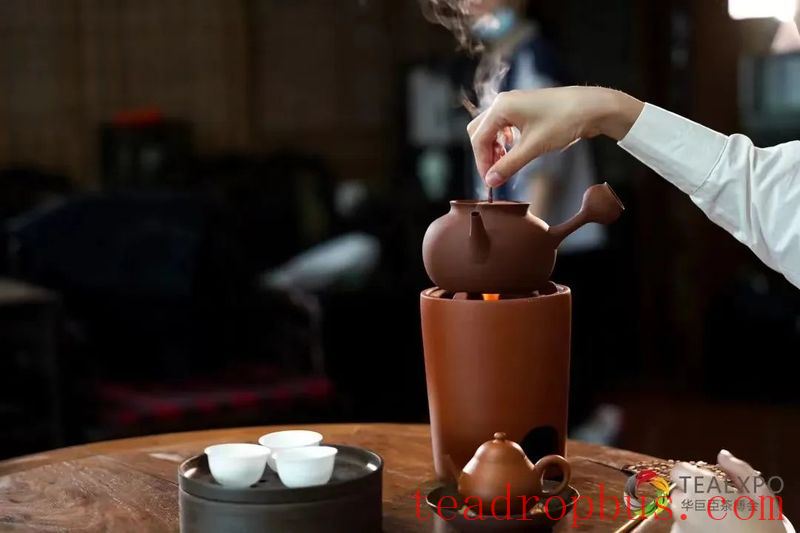As the weather cools,
the opportunities to gather around the brazier to brew Tea become more frequent.
A pot of hot tea, paired with persimmons, oranges, peanuts…
not only offers the joy of DIY, but also makes for great photos,
and has risen to become a top lifestyle trend among young people in autumn and winter.

However, while brewing tea may seem simple,
when it comes to actually doing it, there are some nuances to consider.
While enjoying the warm aroma of tea brewed over a brazier,
it's important to avoid these common mistakes when brewing tea.
1. Using an Iron Kettle Directly to Brew Tea
Many people believe that water boiled in an iron kettle tastes better, so some tea enthusiasts, once they get their hands on a beloved iron kettle, excitedly throw tea leaves into it to brew.
But after the water boils and is poured out, the tea soup turns purple, the tea leaves turn black, and it becomes undrinkable.
This is because iron reacts with Tannic acid in the tea during the brewing process, forming ferric tannate, which is a primary component of blue-black ink, thus turning the tea soup a bluish-black color.
Suggestion: While iron kettles can be used to boil water, if you're brewing tea leaves, using a clay or glass kettle will produce a better taste.
Clay kettles maintain a stable temperature during the brewing process, allowing the aroma and flavor of the tea to be fully released.
Glass kettles are suitable for brewing flower teas, as they allow you to see the color of the tea soup directly, helping you choose the right time to pour it out, ensuring a better taste. However, due to poor heat retention, glass kettles cool down quickly, making them more suitable for immediate consumption.
2. Any Type of Tea Is Suitable for Brewing
Brewing tea is delightful, but not all types of tea are suitable for this method.
When brewing tea, two types are generally chosen: heavily fermented teas such as ripe Pu'er, Liubao tea, and old tea heads, as well as aged teas like aged White Tea, aged Pu'er, and aged Wuyi rock tea.
As for green teas, their characteristic is “clear soup and green leaves, with a strong astringent flavor.” High temperatures can easily destroy Vitamin C in the tea, and polyphenols and Caffeine can leach out easily, causing the tea soup to turn yellow and taste overly bitter, so tender green teas and new teas are not recommended for brewing.
Suggestion: Brewing tea can be done in two ways: direct brewing or brewing after steeping.
3. Tea Leaves Can Be Repeatedly Brewed
The number of times a tea can be brewed varies from tea to tea. However, the brewing time should not be too long, ideally 3 to 5 minutes. Additionally, tea leaves left in the kettle for extended periods do not produce more beneficial components; instead, they decrease.
Suggestion:
Amount of Tea: Reduce the amount of tea used for brewing to about 2/3 of what you would normally use for steeping, and then fill the brewing vessel with 2/3 water. This way, after drinking about 2/3 of the water, you can add more water and avoid repeatedly boiling the same batch.
Brew After Steeping: This is a preferred method among experienced tea drinkers. A good tea can first be brewed through steeping to evenly release its internal components, and then at the end, you can brew it again, allowing the essence of the tea to be presented in different forms.
In addition, when brewing tea, you should add hot water for the second infusion to avoid sudden changes in temperature. Adding water at around 85°C is usually appropriate, producing a better tasting tea soup.
During the brewing process, it is best to leave some tea soup in the kettle before adding more water, rather than completely emptying the kettle each time. Once the tea soup has boiled, you can continue to simmer it slowly over charcoal fire, enhancing its flavor even further.